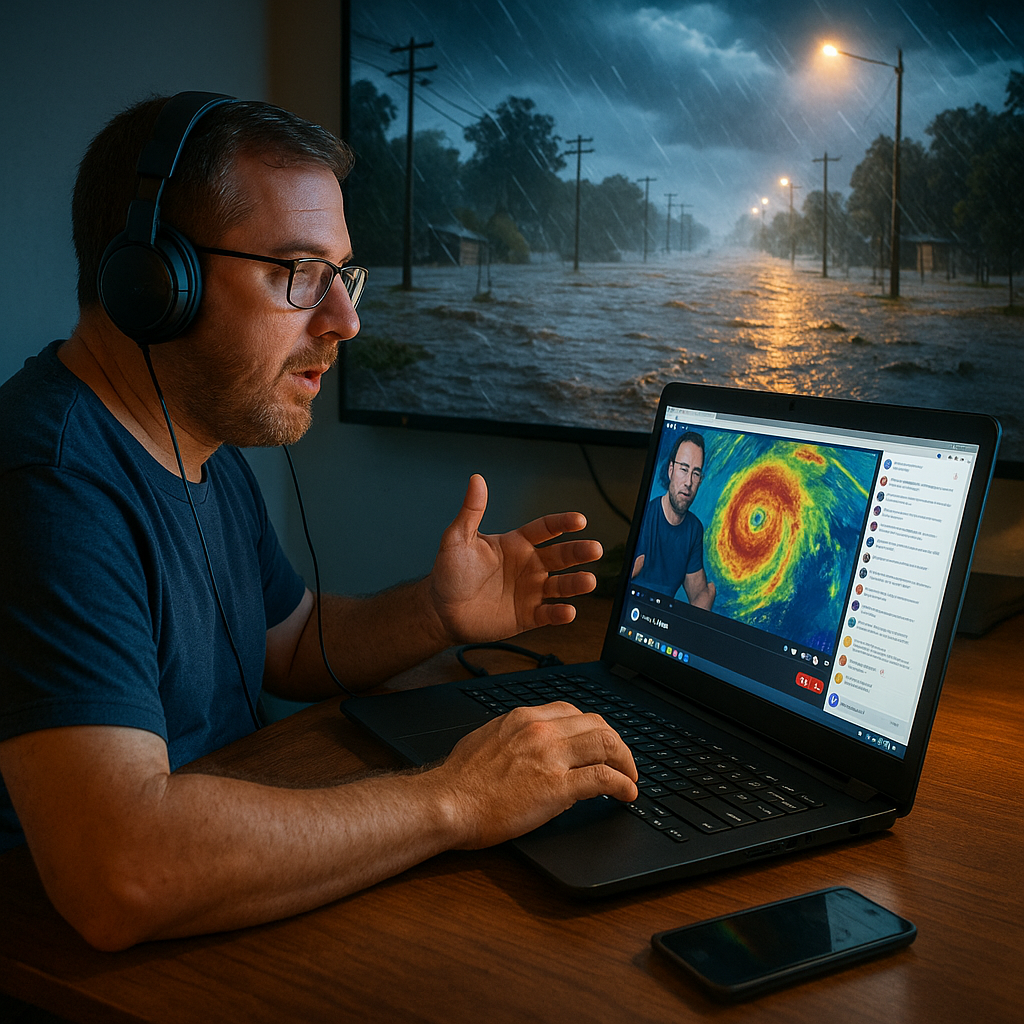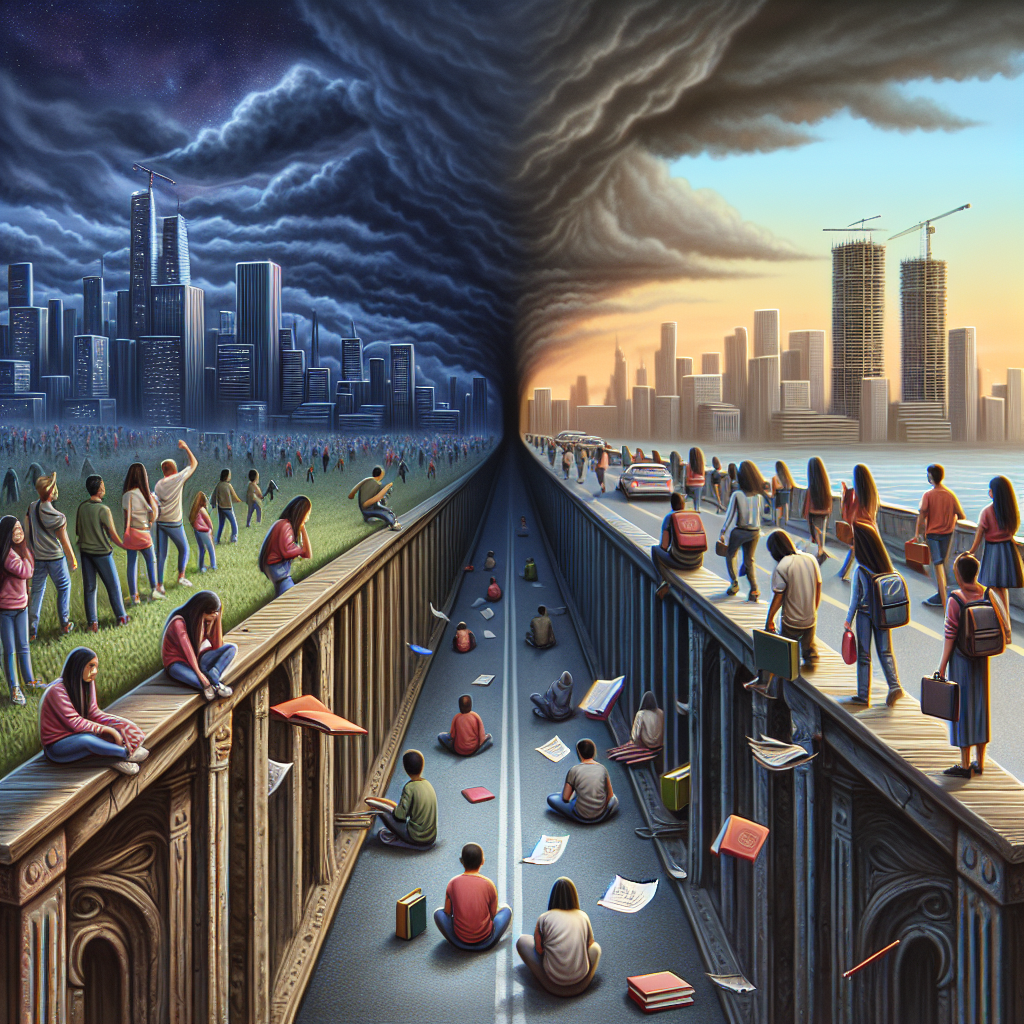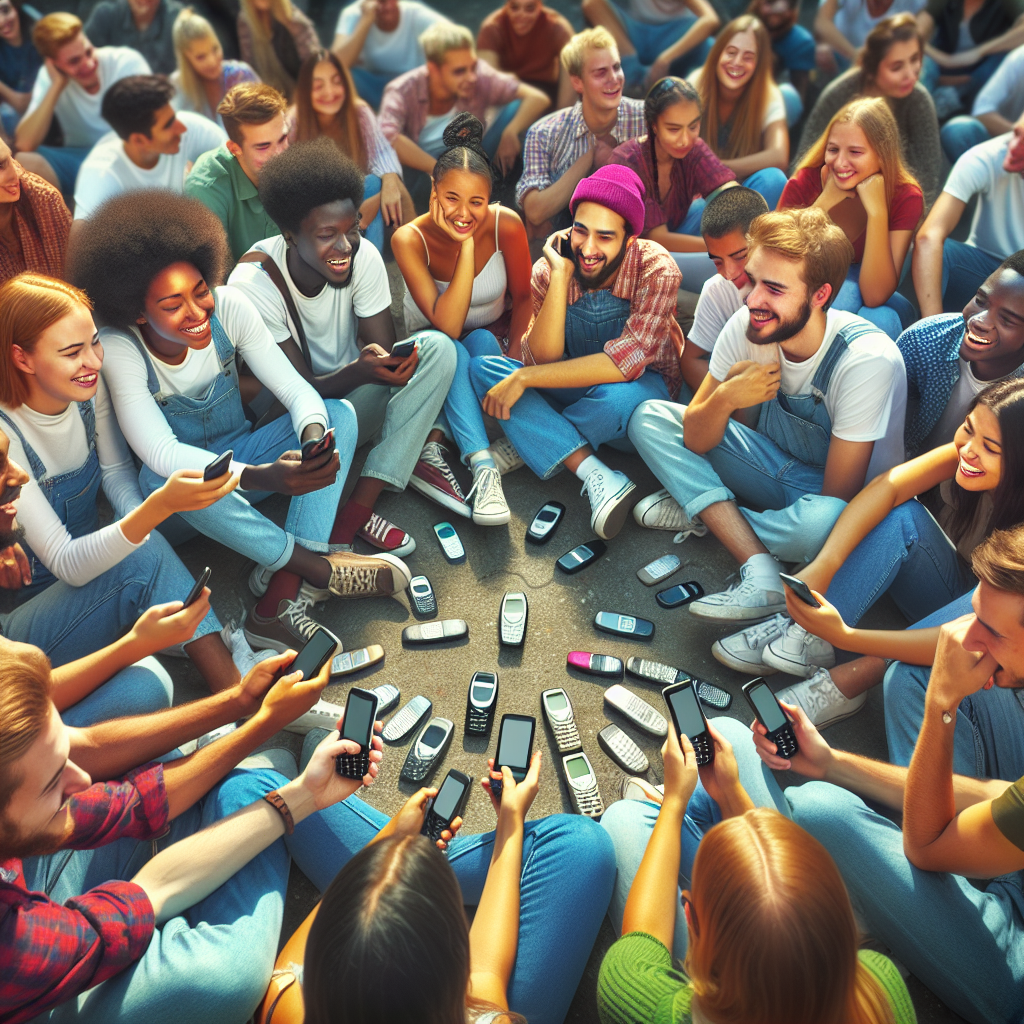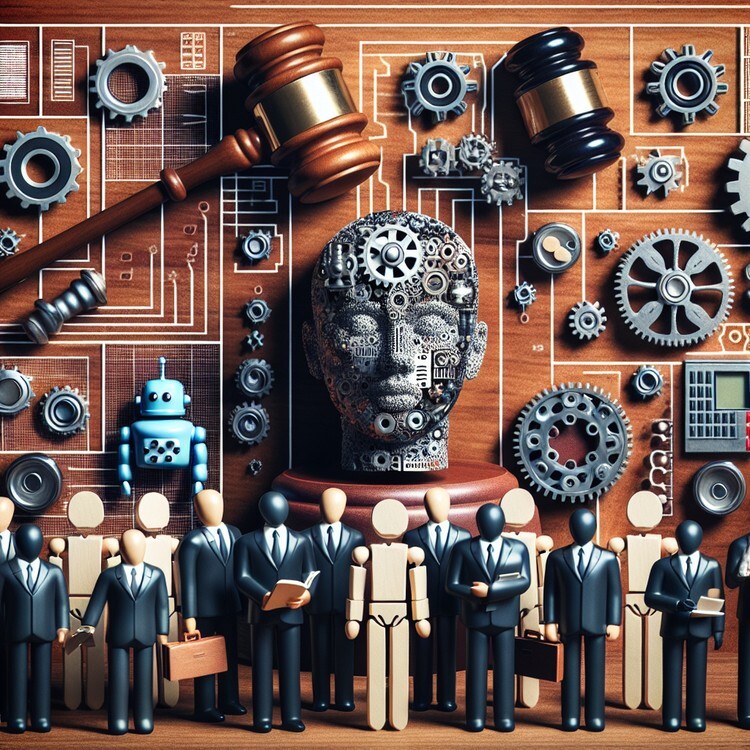In the past few months, people in North Queensland, Australia, have been dealing with tough situations because of extreme weather, especially severe flooding. One person affected is Andrew Brown, a cybersecurity teacher who has become well-known as an amateur weather forecaster on his Facebook page called Wally’s Weather. With over 107,000 followers and 24 million views each month, Brown has become an important source of weather updates for his community, especially during the floods that forced many to leave their homes. He works hard to keep everyone informed, posting updates even at night.
The rise of weather influencers like Brown shows that more people are turning to social media for news and weather updates. Research from the Pew Research Centre found that about 20% of adults in the United States use social media for this kind of information. This change suggests that many people trust these influencers just as much, or even more than, traditional news reporters. Prof. Daniel Angus from Queensland University of Technology explains that weather influencers often give local, real-time updates that mainstream media might miss, especially in rural areas. Their direct connection with the audience helps create a sense of community that traditional news outlets might not provide.
However, there are some downsides to the popularity of weather influencers. Prof. Angus points out that some of them have been criticized for making weather events sound more dramatic than they really are, which can lead to misinformation and panic. For example, a weather influencer called Higgins Storm Chasing faced criticism for making exaggerated predictions about rain and flooding in 2018 that didn’t happen. Unlike official weather organizations, these influencers don’t have to follow the same rules, which raises concerns about their responsibility and the risk of causing fear.
Experts like Alan Sealls, a former TV weatherman and current meteorology professor, stress the importance of trained meteorologists for accurate weather forecasts. While some weather influencers know what they’re doing and have the right tools to provide reliable updates during emergencies, others might not have formal training and could confuse people with uncertain long-range forecasts. Sealls believes that trained professionals are better at avoiding misleading the public, especially when it comes to serious weather events. Despite these challenges, there are still opportunities for people like Andrew Brown to make money from their weather expertise while helping their communities.
Original news source: Who should you trust for a weather forecast? (BBC)
🎧 Listen:
Slow
Normal
Fast
📖 Vocabulary:
| 1 | cybersecurity | Protecting computers and networks from being attacked or damaged |
| 2 | amateur | Doing something for fun or as a hobby, not professionally |
| 3 | forecaster | Someone who predicts what the weather will be like |
| 4 | mainstream | The most common or popular way of doing something |
| 5 | rural | Relating to the countryside, not the city |
| 6 | misinformation | False or incorrect information |
| 7 | exaggerated | Made to seem more important or larger than it really is |
| 8 | predictions | Statements about what will happen in the future |
| 9 | responsibility | Being in charge of something and making sure it is done right |
| 10 | meteorologists | Scientists who study the weather |
| 11 | reliable | Dependable and trustworthy |
| 12 | formal | Following set rules or standards |
| 13 | expertise | Having a lot of knowledge or skill in a particular area |
| 14 | opportunities | Chances to do something or get something good |
| 15 | misleading | Giving the wrong idea or impression |
Group or Classroom Activities
Warm-up Activities:
– CHARADES
Instructions: Divide the class into small groups. Each group will take turns acting out terms related to weather and social media (e.g., flooding, influencer, forecast) without speaking, while the other groups guess the word or phrase. This will help students reinforce vocabulary in an engaging way.
– OPINION POLL
Instructions: Present students with a series of statements related to weather influencers and traditional news sources (e.g., “Weather influencers are more trustworthy than traditional news sources”). Students will move to different parts of the classroom based on whether they agree, disagree, or are neutral. Afterward, facilitate a discussion on their choices.
– MIND MAP
Instructions: In pairs, students will create a mind map on the board about the pros and cons of relying on weather influencers for news. They can include aspects such as community connection, misinformation, and traditional media. This will help them visualize their thoughts and encourage collaborative learning.
– HEADLINE CREATION
Instructions: Students will work in small groups to come up with catchy headlines for the article about Andrew Brown and weather influencers. Encourage them to be creative and think about what would grab the attention of readers. Each group will share their headline with the class.
– TWO TRUTHS AND A LIE
Instructions: Each student will come up with two true statements and one false statement about weather influencers, traditional news, or the impact of social media on news reporting. They will share their statements with a partner, who will then guess which one is the lie. This activity promotes critical thinking and discussion.
🤔 Comprehension Questions:
1. Who is Andrew Brown and what role has he taken on during the floods in North Queensland?
2. How has Andrew Brown’s Facebook page, Wally’s Weather, impacted his community during the extreme weather events?
3. What does research from the Pew Research Centre reveal about adults in the United States and their use of social media for weather updates?
4. According to Prof. Daniel Angus, what advantages do weather influencers have over traditional news reporters?
5. What are some criticisms that weather influencers face, as mentioned in the article?
6. How did Higgins Storm Chasing contribute to the discussion about the responsibility of weather influencers?
7. Why do experts like Alan Sealls believe trained meteorologists are essential for accurate weather forecasts?
8. What opportunities do weather influencers like Andrew Brown have despite the challenges they face in providing weather updates?
Go to answers ⇩
🎧✍️ Listen and Fill in the Gaps:
In the past few (1)______, people in North Queensland, Australia, have been dealing with tough situations because of extreme (2)______, especially severe flooding. One person affected is Andrew Brown, a cybersecurity teacher who has become well-known as an amateur weather forecaster on his Facebook page called Wally’s (3)______. With over 107,000 followers and 24 million views each month, Brown has become an important source of weather updates for his (4)______, especially during the floods that forced many to leave their homes. He works hard to keep everyone informed, posting updates even at night.
The rise of weather influencers like Brown shows that more people are turning to social media for news and weather (5)______. Research from the Pew Research Centre found that about 20% of adults in the United States use social media for this kind of information. This (6)______ suggests that many people trust these influencers just as much, or even more than, traditional news reporters. Prof. Daniel Angus from Queensland University of Technology explains that weather influencers often give local, real-time updates that (7)______ media might miss, especially in rural (8)______. Their direct connection with the audience helps create a sense of community that traditional news outlets might not provide.
However, there are some (9)______ to the popularity of weather influencers. Prof. Angus (10)______ out that some of them have been criticized for making weather events sound more dramatic than they really are, which can lead to misinformation and panic. For example, a weather influencer called Higgins Storm Chasing faced (11)______ for making exaggerated (12)______ about rain and flooding in 2018 that didn’t happen. Unlike official weather organizations, these influencers don’t have to follow the same rules, which raises concerns about their responsibility and the risk of causing fear.
Experts like Alan Sealls, a former TV weatherman and current meteorology professor, stress the (13)______ of trained meteorologists for accurate weather forecasts. While some weather influencers know what they’re doing and have the right (14)______ to provide reliable updates during (15)______, others might not have formal training and could confuse people with uncertain long-range forecasts. Sealls believes that trained professionals are better at avoiding (16)______ the public, especially when it comes to serious weather events. Despite these challenges, there are still opportunities for people like Andrew Brown to make money from their weather expertise while helping their communities.
Go to answers ⇩
💬 Discussion Questions:
Students can ask a partner these questions, or discuss them as a group.
1. What is your opinion on using social media for news and weather updates?
2. How would you feel if you had to rely on social media for important information during an emergency?
3. Do you think it’s a good idea for regular people to become weather influencers? Why or why not?
4. Have you ever followed someone on social media for news updates? What was your experience like?
5. What is a major weather event you’ve experienced in your life? How did it affect you?
6. Do you believe that social media influencers can provide accurate information? Why or why not?
7. How would you feel if a weather influencer made a prediction that caused panic in your community?
8. Do you think traditional news outlets are still important? Why or why not?
9. What is a responsibility that influencers should have when sharing information about weather events?
10. How do you usually stay informed about the weather? Do you prefer social media or traditional methods?
11. Do you think people trust social media influencers more than trained professionals? Why do you think that is?
12. What is a situation where you think having a trained professional is essential?
13. How would you feel if someone you trusted gave you wrong information about the weather?
14. Do you think weather influencers should be held responsible for spreading misinformation? Why or why not?
15. What is your experience with community support during tough times, like bad weather? How did it make you feel?
Individual Activities
📖💭 Vocabulary Meanings:
Match each word to its meaning.
Words:
1. cybersecurity
2. amateur
3. forecaster
4. mainstream
5. rural
6. misinformation
7. exaggerated
8. predictions
9. responsibility
10. meteorologists
11. reliable
12. formal
13. expertise
14. opportunities
15. misleading
Meanings:
(A) Chances to do something or get something good
(B) Protecting computers and networks from being attacked or damaged
(C) Someone who predicts what the weather will be like
(D) Statements about what will happen in the future
(E) Being in charge of something and making sure it is done right
(F) Scientists who study the weather
(G) Dependable and trustworthy
(H) Doing something for fun or as a hobby, not professionally
(I) Following set rules or standards
(J) The most common or popular way of doing something
(K) Relating to the countryside, not the city
(L) Made to seem more important or larger than it really is
(M) False or incorrect information
(N) Giving the wrong idea or impression
(O) Having a lot of knowledge or skill in a particular area
Go to answers ⇩
🔡 Multiple Choice Questions:
1. Who is Andrew Brown?
(a) A professional meteorologist
(b) A cybersecurity teacher and amateur weather forecaster
(c) A politician in North Queensland
(d) A famous social media influencer
2. How many followers does Andrew Brown have on his Facebook page, Wally’s Weather?
(a) About 50,000
(b) 200,000
(c) 10,000
(d) Over 107,000
3. What percentage of adults in the United States use social media for weather updates, according to the Pew Research Centre?
(a) 50%
(b) 10%
(c) 20%
(d) 30%
4. What is a potential downside of weather influencers mentioned in the article?
(a) They provide too much accurate information
(b) They are always more reliable than traditional news outlets
(c) They only focus on urban areas
(d) They may exaggerate weather events, causing misinformation
5. Who criticized the weather influencer Higgins Storm Chasing?
(a) Prof. Daniel Angus
(b) Andrew Brown
(c) Alan Sealls
(d) The general public
6. What is one reason experts believe trained meteorologists are important?
(a) They are more entertaining than weather influencers
(b) They have more followers on social media
(c) They provide accurate weather forecasts and avoid misleading the public
(d) They can predict the weather better than anyone else
7. What does Prof. Daniel Angus say about the connection between weather influencers and their audience?
(a) It often leads to misinformation
(b) It helps create a sense of community
(c) It is less important than traditional news
(d) It makes people less interested in weather updates
8. What opportunity exists for people like Andrew Brown despite the challenges faced by weather influencers?
(a) They can make money from their weather expertise while helping their communities
(b) They can become professional meteorologists without training
(c) They can replace traditional news outlets entirely
(d) They can avoid any criticism from the public
Go to answers ⇩
🕵️ True or False Questions:
1. Andrew Brown is not a cybersecurity teacher who has gained popularity as a weather forecaster on Facebook.
2. Brown’s Facebook page, Wally’s Weather, has less than 107,000 followers and gets only 24,000 views each month.
3. Research shows that about 20% of adults in the U.S. use social media for news and weather information.
4. Many people in the community do not rely on Brown for weather updates, especially during emergencies like floods.
5. Weather influencers rarely provide real-time updates that traditional news outlets may overlook.
6. Experts believe that trained meteorologists are better equipped to provide accurate weather forecasts than untrained influencers.
7. Some weather influencers have been criticized for exaggerating weather events, which can cause panic and misinformation.
8. North Queensland, Australia, has been experiencing severe flooding recently.
Go to answers ⇩
📝 Write a Summary:
Write a summary of this news article in two sentences.
Check your writing now with the best free AI for English writing!
Writing Questions:
Answer the following questions. Write as much as you can for each answer.
Check your answers with our free English writing assistant!
1. Who is Andrew Brown and what role has he taken on during the recent floods in North Queensland?
2. Why do people in North Queensland trust weather influencers like Andrew Brown for updates?
3. What are some problems associated with the rise of weather influencers according to Prof. Daniel Angus?
4. How do experts like Alan Sealls view the importance of trained meteorologists compared to weather influencers?
5. What opportunities might weather influencers have despite the challenges they face?
✅ Answers
🤔✅ Comprehension Question Answers:
1. Who is Andrew Brown and what role has he taken on during the floods in North Queensland?
Andrew Brown is a cybersecurity teacher who has become an amateur weather forecaster on his Facebook page called Wally’s Weather. During the floods in North Queensland, he has taken on the role of providing important weather updates to his community.
2. How has Andrew Brown’s Facebook page, Wally’s Weather, impacted his community during the extreme weather events?
Wally’s Weather has become a vital source of weather information for his community, especially during the floods. With over 107,000 followers, Brown keeps people informed with regular updates, even at night, helping them navigate the tough situations caused by the extreme weather.
3. What does research from the Pew Research Centre reveal about adults in the United States and their use of social media for weather updates?
Research from the Pew Research Centre shows that about 20% of adults in the United States use social media to get news and weather updates, indicating a shift towards trusting these platforms for information.
4. According to Prof. Daniel Angus, what advantages do weather influencers have over traditional news reporters?
Prof. Daniel Angus explains that weather influencers often provide local, real-time updates that mainstream media might overlook, especially in rural areas. Their direct connection with the audience fosters a sense of community that traditional news outlets may not offer.
5. What are some criticisms that weather influencers face, as mentioned in the article?
Weather influencers face criticism for sometimes making weather events sound more dramatic than they are, which can lead to misinformation and panic. This exaggeration can create confusion and fear among the public.
6. How did Higgins Storm Chasing contribute to the discussion about the responsibility of weather influencers?
Higgins Storm Chasing faced criticism for making exaggerated predictions about rain and flooding in 2018 that did not occur. This incident highlights concerns about the responsibility of weather influencers and the potential risks of spreading fear through inaccurate information.
7. Why do experts like Alan Sealls believe trained meteorologists are essential for accurate weather forecasts?
Experts like Alan Sealls stress that trained meteorologists have the skills and knowledge to provide accurate weather forecasts. They are better at avoiding misleading the public, especially during serious weather events, compared to some influencers who may lack formal training.
8. What opportunities do weather influencers like Andrew Brown have despite the challenges they face in providing weather updates?
Despite the challenges, weather influencers like Andrew Brown have the opportunity to monetize their weather expertise while helping their communities stay informed during emergencies.
Go back to questions ⇧
🎧✍️✅ Listen and Fill in the Gaps Answers:
(1) months
(2) weather
(3) Weather
(4) community
(5) updates
(6) change
(7) mainstream
(8) areas
(9) downsides
(10) points
(11) criticism
(12) predictions
(13) importance
(14) tools
(15) emergencies
(16) misleading
Go back to questions ⇧
📖💭✅ Vocabulary Meanings Answers:
1. cybersecurity
Answer: (B) Protecting computers and networks from being attacked or damaged
2. amateur
Answer: (H) Doing something for fun or as a hobby, not professionally
3. forecaster
Answer: (C) Someone who predicts what the weather will be like
4. mainstream
Answer: (J) The most common or popular way of doing something
5. rural
Answer: (K) Relating to the countryside, not the city
6. misinformation
Answer: (M) False or incorrect information
7. exaggerated
Answer: (L) Made to seem more important or larger than it really is
8. predictions
Answer: (D) Statements about what will happen in the future
9. responsibility
Answer: (E) Being in charge of something and making sure it is done right
10. meteorologists
Answer: (F) Scientists who study the weather
11. reliable
Answer: (G) Dependable and trustworthy
12. formal
Answer: (I) Following set rules or standards
13. expertise
Answer: (O) Having a lot of knowledge or skill in a particular area
14. opportunities
Answer: (A) Chances to do something or get something good
15. misleading
Answer: (N) Giving the wrong idea or impression
Go back to questions ⇧
🔡✅ Multiple Choice Answers:
1. Who is Andrew Brown?
Answer: (b) A cybersecurity teacher and amateur weather forecaster
2. How many followers does Andrew Brown have on his Facebook page, Wally’s Weather?
Answer: (d) Over 107,000
3. What percentage of adults in the United States use social media for weather updates, according to the Pew Research Centre?
Answer: (c) 20%
4. What is a potential downside of weather influencers mentioned in the article?
Answer: (d) They may exaggerate weather events, causing misinformation
5. Who criticized the weather influencer Higgins Storm Chasing?
Answer: (a) Prof. Daniel Angus
6. What is one reason experts believe trained meteorologists are important?
Answer: (c) They provide accurate weather forecasts and avoid misleading the public
7. What does Prof. Daniel Angus say about the connection between weather influencers and their audience?
Answer: (b) It helps create a sense of community
8. What opportunity exists for people like Andrew Brown despite the challenges faced by weather influencers?
Answer: (a) They can make money from their weather expertise while helping their communities
Go back to questions ⇧
🕵️✅ True or False Answers:
1. Andrew Brown is not a cybersecurity teacher who has gained popularity as a weather forecaster on Facebook. (Answer: False)
2. Brown’s Facebook page, Wally’s Weather, has less than 107,000 followers and gets only 24,000 views each month. (Answer: False)
3. Research shows that about 20% of adults in the U.S. use social media for news and weather information. (Answer: True)
4. Many people in the community do not rely on Brown for weather updates, especially during emergencies like floods. (Answer: False)
5. Weather influencers rarely provide real-time updates that traditional news outlets may overlook. (Answer: False)
6. Experts believe that trained meteorologists are better equipped to provide accurate weather forecasts than untrained influencers. (Answer: True)
7. Some weather influencers have been criticized for exaggerating weather events, which can cause panic and misinformation. (Answer: True)
8. North Queensland, Australia, has been experiencing severe flooding recently. (Answer: True)
Go back to questions ⇧













